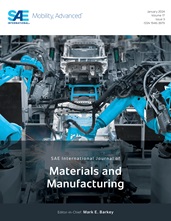With the rapid development of new energy vehicles, high-power charging technology
has become an effective way to meet the fast-charging needs of electric
vehicles. Temperature control of charging cables is crucial for the safety and
efficiency of charging. This article aims to develop finite element method
(FEM)-ML to predict the temperature field of the charging cable. First, the
initial ambient temperature and maximum current were set as the main influencing
factors, and a dataset including various charging parameters and cable
temperature fields was built by FEM based on a two-factor, four-level orthogonal
design. Then, surrogate models based on the Bayesian optimization (BO)
algorithm, multilayer perceptron (MLP) model, and extreme gradient boosting
(XGB) model were established to predict the temperature field distribution of
high-power charging cables. The results indicated that the XGB model had better
prediction performance than the MLP model, with average values of MSE, RMSE,
MAE, and R2 being 0.126, 0.351, 0.176, and 0.998,
respectively. The XGB model maintained prediction errors within 15% in both
extrapolation and interpolation schemes, demonstrating good generalization
performance. Moreover, the XGB model achieved a prediction speed more than 96%
faster than that of FEM predictions, significantly enhancing the prediction
efficiency. The feature importance analysis revealed that the maximum current
has a more significant impact on the temperature distribution of the cable than
the initial temperature. This study provides an efficient and accurate solution
for predicting the temperature field of high-power liquid-cooled charging
cables.
